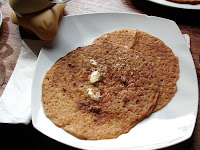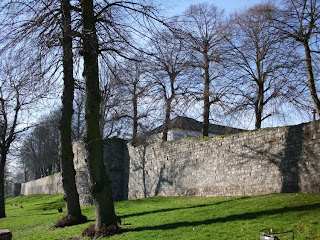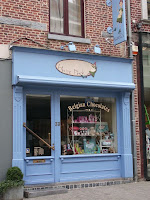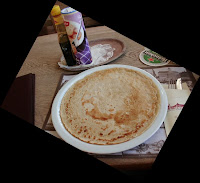 |
| Amsterdam Centraal Station |
Crisp Spring air greeted me as I stepped out into the morning sun. I walked at a fast clip through town to catch the 8:19 train to Dusseldorf. From there I was catching the ICE train for my very first trip to Amsterdam.
The ICE, or Inter-City Express, is a high-speed train that travels predominantly throughout Germany, the Netherlands, France, Belgium, Austria and Switzerland. Traveling at a speed of 300 kph (190 mph), the ICE is much more cost-effective than flying. Four hundred twenty-five miles lie between Dusseldorf and Amsterdam and the ICE makes the trip in two hours and 12 minutes, half the time of a regular train. The short travel time makes for a great solo day trip or family excursion.
 |
| Beautiful craft work inside Amsterdam Centraal Station |
Amsterdam, named for the Dam on the Amstel River, was settled in the early 1200s. The natural harbor formed by the dam was known as an important international trade area. Between 1544 and 1662 a ring of canals, formed in the shape of a semi-circle, was built, creating the central area of the city. Between the
13th and 20th centuries, Amsterdam rose, fell and rose again through the perils of flood, fire and war, the glory of the Golden Age, the devastation of the Bubonic Plaque and the arrival of the second Golden Age.
The rich history of Amsterdam is far too lengthy (and interesting) to do it justice here, but history played a big part in my decision to visit the Dutch city. Aside from the beautiful 17th century architecture, Amsterdam is home to a vast array of cultural exhibits and museums including the Van Gogh Museum and Anne Frank House. History and art museums abound as do the lesser known (and sometimes more obscure) museums such as the Tulip Museum, Vodka Museum and Sex Museum.
Amsterdam offers a variety of cafes and shops along the canal-lined streets. Tour boats and house boats provide a different vantage point from which to see the city. Just when you think you've seen the most beautiful canal-lined street ever, you walk a couple blocks further to find one even more charming than the last.
The capital city of Holland, where old meets new, prides itself on diversity and acceptance rather than mere tolerance. Be warned: as part of its diverse and accepting culture Amsterdam allows soft drugs and the smell of pot occasionally wafts out onto the street. As I walked the historical streets the pungent smell greeted me from local dives, a few cafes and one very high-end clothing store. Whenever I travel somewhere new I always attempt to experience the culture as a local. But, in this instance, I did not "do as the Romans do", for those of you with inquiring minds.
 |
| Original doorway leading into Otto Frank's business. |
The highlight of my trip was a visit to the
Anne Frank House. Having read The Diary of Anne Frank several times and learned about it in eighth grade I was thrilled beyond words to learn the Secret Annex where she, her family and friends hid during WWII had been preserved as a museum in Amsterdam. After liberation from the camps, Otto Frank...Anne's father and the only survivor from the Annex...returned to Amsterdam and vowed to preserve the building as a museum after learning of the loss of his family and reading Anne's diaries, short stories and novel.
I'd been warned it's best to buy tickets for the Anne Frank House on the internet to avoid long lines but online tour tickets were sold out by the time I attempted to buy one. Determined to see the museum anyway, I decided I was willing to stand in line up to two hours, if necessary. After the ICE train delivered its passengers to Amsterdam's Central Station, I walked to Dam Square, near the
Royal Palace and
Madame Toussauds Wax Museum. I'll admit I didn't stop at either because I was too fixated on getting into the Anne Frank House. But that just gives me another excuse to go back. Beyond the Royal Palace I crossed over several bridges then turned onto Prinsengracht, the street that was home to Otto Frank's businesses and the Secret Annex.
I give the Anne Frank House a lot of credit for running a well-organized museum. The line was around the corner and halfway down the block when I arrived but I was inside the museum within half an hour. Because picture-taking is not allowed in the museum any photos displayed here of the inside are from stock.
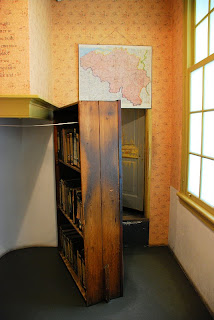 |
| Bookcase concealing Annex entrance. |
A self-guided tour through the Anne Frank House leads you room by room beginning with Otto Frank's business warehouse and office. Photos, written documents, artifacts and videos from those who knew or helped the Frank family tell the story of the Secret Annex and its inhabitants. Then you arrive at the tall, movable bookcase used to conceal the entrance to the Secret Annex. A long climb up a narrow and steep staircase brings you to the rooms where the Frank and van Pel families lived from July 1942 until August 1944 when an anonymous caller informed Nazi police of the hideaway.
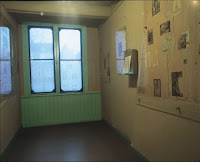 |
| Anne's room in the Secret Annex. |
The rooms in the Secret Annex are no longer furnished but otherwise remain as they were in the early 1940s. Though picture taking is not allowed I was surprised to see the kitchen sink where the Frank's and van Pel's washed and prepared meals sitting out in the open where people could touch it. I was deeply humbled to stand there in the same room as the eight brave people who lived in the Secret Annex almost 70 years ago.
If time is taken to look at all the artifacts, watch all the videos, and pause and reflect for a few minutes the entire tour takes one hour. It was, in my opinion, an hour well-spent and I will visit the Anne Frank House again. Prior knowledge of Anne Frank and her story makes this excursion much more meaningful. I recommend families with children aged eight to 11 years old who want to visit the museum have their children read a children's version of the story and anyone older can, of course, read
The Diary of Anne Frank.
By the way, did you know that we Americans have been pronouncing Anne's name incorrectly all this time? The German "e" on the end of a name or word is pronounced "uh". So Anne was actually "Anna" to those who knew and loved her.
Wanderlust and hunger lead me to find a place to eat before heading back to the train station. Earlier in the day I'd been in the Amsterdam Tourists Office and recalled the beautiful wooden staircase that lead downstairs to a cafe. I decided to go there in the hopes of enjoying a traditional Dutch pancake for dinner.
 |
| Smits Koffiehuis |
Smits Koffiehuis (translated: Coffee House) is a brightly lit open cafe and restaurant with white walls and warm wooden decor and furniture. I sat on a ladder back Shaker style chair by the window where I had a clear view of the outdoor dining area situated on a dock by the canal. Cappuccino warmed my fingers as I awaited the arrival of my Dutch pancake.
The pancake was thinner than its American counterpart and thicker than a French crepe. I ordered a plain pancake because I didn't want anything altering the taste. Along with it came a side of powdered sugar and a delicious bronze pancake syrup that tasted of maple syrup with a strong hint of molasses.
One day is hardly enough time to see Amsterdam. It is, however, long enough to make you fall in love with the architecture, become enchanted with the canals and leave you wanting more. A day in Amsterdam is like spending the afternoon with a friend you haven't seen in years....you leave wishing you had more time. Another trip is already in the works and will include some of the more obscure museums, a canal boat tour, the Van Gogh museum, and a tour of the Royal Palace. Stay tuned...
Travel Tips:
Tip #1: Amsterdam was built primarily in the 1600s. While it is possible to travel through by car, many of the streets and neighborhoods are more easily accessible by bike or foot.
Biking is encouraged and preferred by the locals and forty percent of the residents use this mode of transportation. Be on the alert for bikers...they are fast...and stay off the red "bikers only" paths.
Tip #2: Many of the museums sell tickets online so you can avoid standing in a long line.
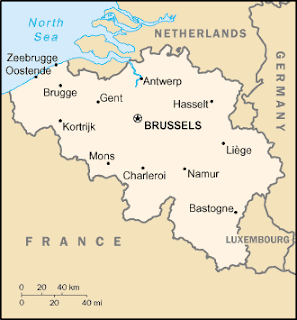
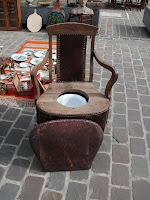 When your feet are tired or you want to escape the heat or cold, head over to 't Poorthuis, which is Flemish for The Gate House. Poorthuis is a simple cafe with wooden decor showcasing old photos and glassware on the walls. A delicious array of choices are offered on the menu including pancakes, omelets, sandwiches and more. A variety of beer is available for those who are as serious about beer-drinking as the Belgians. Whichever type of beer you choose (there are over 450 varieties of beer in Belgium), it will be served to you in the appropriate glass...not just any old beer glass. The Belgian people are serious about their beer. The man dining next to my friend and I enjoyed a full-bodied, dark brown beer and thick bacon (think Canadian bacon) sandwich at 10:30am while I enjoyed my cappuccino with whipped cream and pancakes served with brown sugar.
When your feet are tired or you want to escape the heat or cold, head over to 't Poorthuis, which is Flemish for The Gate House. Poorthuis is a simple cafe with wooden decor showcasing old photos and glassware on the walls. A delicious array of choices are offered on the menu including pancakes, omelets, sandwiches and more. A variety of beer is available for those who are as serious about beer-drinking as the Belgians. Whichever type of beer you choose (there are over 450 varieties of beer in Belgium), it will be served to you in the appropriate glass...not just any old beer glass. The Belgian people are serious about their beer. The man dining next to my friend and I enjoyed a full-bodied, dark brown beer and thick bacon (think Canadian bacon) sandwich at 10:30am while I enjoyed my cappuccino with whipped cream and pancakes served with brown sugar.






